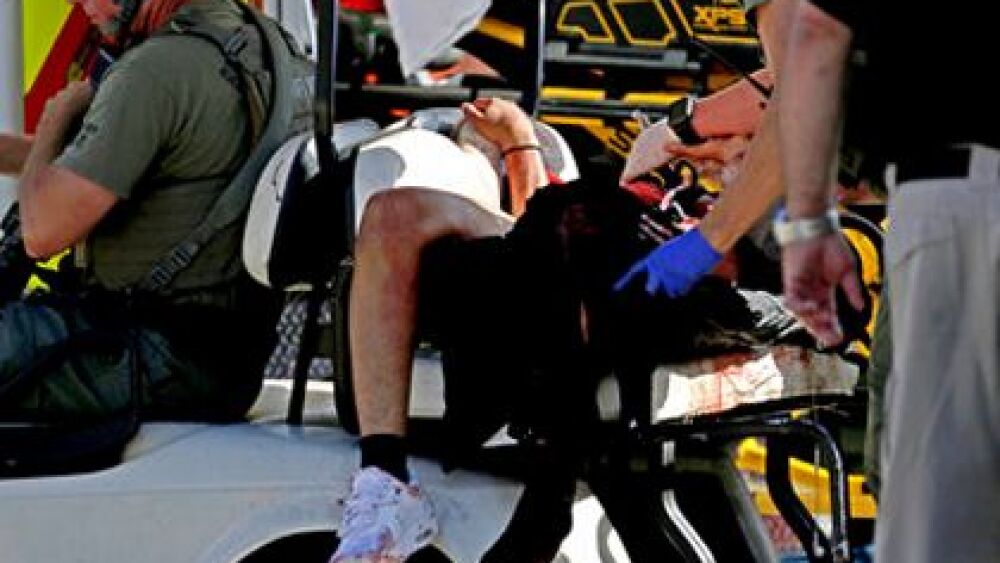We are teaching “scene safety” wrong. Aside from the farce of the scene safe BSI “hokey pokey” done at every lab station and practical scenario, I think there is one major thing missing:
Thinking.
Consider these recent real-life incidents:
An ambulance in Mississippi comes upon a wreck on the highway. A vehicle is on fire and a person is inside. Medics rush to the burning vehicle and pull the driver from the vehicle. They save his life.
Two EMTs are in a supermarket in Maine when they hear screaming. They find a woman whose throat has been cut. They render aid even though the perpetrator is still on the scene. Bystanders on scene detain the assailant.
What are the similarities between the two events? The EMS providers on both scenes directly acted against what was likely taught to them: If the scene isn’t safe, don’t go in. Yet they were hailed as heroes in the media as well as by their colleagues.
In civilian life - in a dark movie theater or in the mall - that same medic may choose to intervene in a deadly situation to save a life. Just recently a civilian disarmed a man who shot and killed a Louisiana state trooper.
Rigid, unrealistic and wrong
The scene safety we teach EMT and paramedic students is rigid, unrealistic and wrong.
Scene safety instruction isn’t alone in this regard. Other things we have taught to EMTs and paramedics fall into the same rigid and wrong category:
- Suction (only suction for 15 seconds),
- Oxygen (give everyone a lot of the wonder drug) and
- Spinal immobilization (everyone with a significant MOI gets a backboard.)
How and when will EMS education finally embrace the fact that strict rules don’t work - even in things like scene safety? To be clear, I am not advocating reckless behavior or saying EMTs must act in a dangerous situation. I do believe some will choose to act and in certain cases it is appropriate to do so.
In many cases, organizations are accepting this philosophy. The Maine EMS Medical Direction and Practices Board issued this statement in a white paper on active-shooter incidents:
“The philosophy of this type of scene management is to work with law enforcement to determine when appropriately trained EMS can enter an active-shooter environment (with law enforcement protection) and provide targeted, life saving patient care. EMS and law enforcement will determine how to make the scene ‘safe enough’ to provide limited patient triage and care.”
Criterion-based decision making
Perhaps teaching criterion-based decision making is part of the answer. Instead of telling students to never go in - which we know isn’t true or modeled in practice - what if we used the following guidelines for scene safety?
- EMS may be dangerous.
- Remaining safe involves a series of important decisions made under pressure.
- There are many times you should drop back and wait for help.
- There may be times you choose to take a calculated risk.
- There are safety precautions that can be used to reduce the risk, such as teamwork, PPE and not reacting quickly or foolishly.
- You will never be able to help - and you may become part of the problem - if you are hurt or killed.
This list of criteria might not be complete, but it provides a direction. Explore the list of criteria with case studies and assigned group discussions. Here are four EMS scene safety scenarios for group discussion:
1. No PPE
You are off-duty and come upon an auto-pedestrian crash. A small child is on the ground bleeding profusely. You have no PPE with you. How could you stop bleeding while still protecting yourself from the patient’s blood?
2. Submerged vehicle
You are driving home from a shift when you see tire tracks off the road into a lake. Two bystanders are waving frantically. A mini van has gone into the lake with multiple occupants. The van isn’t visible. List five considerations that would be important to help you decide whether to attempt a rescue of the occupants.
3. Active shooter incident
You are staged at the scene of a school shooting. Police command wants two EMTs to enter a warm zone with tactical officers to rapidly treat and evacuate casualties. You have a helmet and body armor. While inside, near a child who is bleeding, you hear shots and the officer advises that the shooter is on the move. List at least 3 tactical options you have at that point.
4. Intimate partner violence
You are dispatched to an incident inside a home where neighbors report hearing glass break. Police are en route, but you are closer. Do you respond into the home or stage until the scene is secure? Explain your decision.
There are many times EMS personnel may choose to take a risk and we haven’t helped them by imploring them to wait until the scene is safe. An EMT will never be able to make decisions properly if not given criteria to help them succeed.













